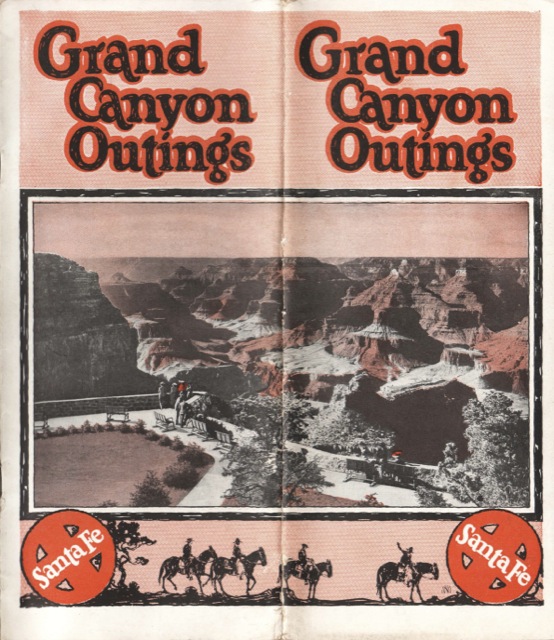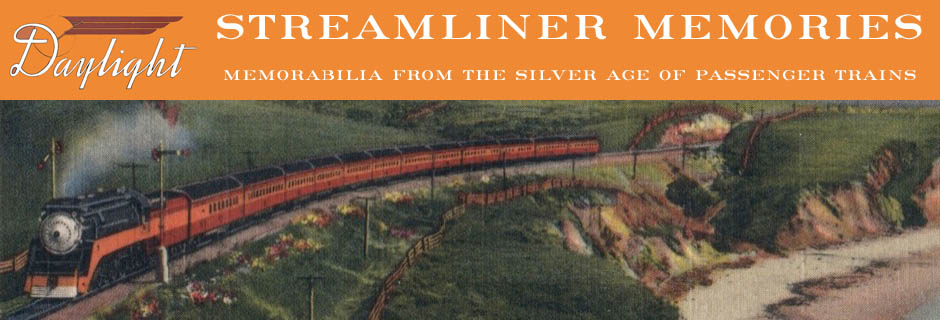We already seen a 1941 edition of this booklet, but other than the name and both being issued by the Santa Fe Railway, the two have very little in common. This 1923 version has fewer pages (28 vs. 40), but with tinier text it appears to have more words and almost as many photos as the later edition.

Click image to download a 23.4-MB PDF of this booklet.
The older booklet also has two maps of the Grand Canyon, one showing relief and the other a topographic and trail maps. The newer booklet only had a map of the Santa Fe rail system. The maps, and in fact the printing of the entire booklet, are credited to Rand McNally.
This is not the only example of brochures and booklets from the early 20th century using smaller type than in the middle and later parts of the century. Does the increasing size of type over time represent new marketing techniques, or does it reflect a dumbing down of tourist literature in response to an increase in the number of people who travel? Certainly, only the upper classes could afford to take trains to national parks in the early part of the century.
Slightly more than 100,000 people visited Grand Canyon National Park in 1923, most of them by train. By 1941, visitors to the Grand Canyon had more than quadrupled, and today well over 4 million people a year visit the park. As some point, probably well before 1941, people visiting by car outnumbered those who took the train, but as owner and operator of El Tovar and other facilities within the park, Santa Fe and Fred Harvey would have to cater (and direct their advertising) to auto users as much as to rail travelers.
